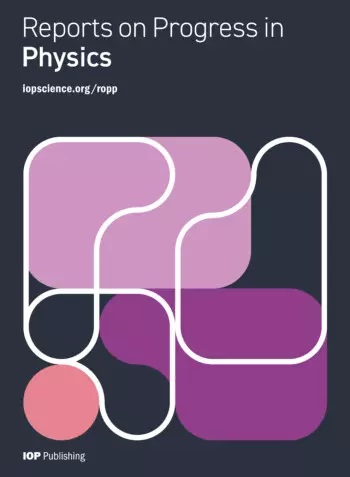Single-molecule nano-optoelectronics: insights from physics
IF 20.7
1区 物理与天体物理
Q1 PHYSICS, MULTIDISCIPLINARY
引用次数: 5
Abstract
Single-molecule optoelectronic devices promise a potential solution for miniaturization and functionalization of silicon-based microelectronic circuits in the future. For decades of its fast development, this field has made significant progress in the synthesis of optoelectronic materials, the fabrication of single-molecule devices and the realization of optoelectronic functions. On the other hand, single-molecule optoelectronic devices offer a reliable platform to investigate the intrinsic physical phenomena and regulation rules of matters at the single-molecule level. To further realize and regulate the optoelectronic functions toward practical applications, it is necessary to clarify the intrinsic physical mechanisms of single-molecule optoelectronic nanodevices. Here, we provide a timely review to survey the physical phenomena and laws involved in single-molecule optoelectronic materials and devices, including charge effects, spin effects, exciton effects, vibronic effects, structural and orbital effects. In particular, we will systematically summarize the basics of molecular optoelectronic materials, and the physical effects and manipulations of single-molecule optoelectronic nanodevices. In addition, fundamentals of single-molecule electronics, which are basic of single-molecule optoelectronics, can also be found in this review. At last, we tend to focus the discussion on the opportunities and challenges arising in the field of single-molecule optoelectronics, and propose further potential breakthroughs.单分子纳米光电子学:来自物理学的见解
单分子光电器件有望在未来实现硅基微电子电路的小型化和功能化。经过几十年的快速发展,该领域在光电材料的合成、单分子器件的制造和光电功能的实现方面取得了重大进展。另一方面,单分子光电器件为在单分子水平上研究物质的内在物理现象和调控规律提供了可靠的平台。为了进一步实现和规范光电子功能走向实际应用,有必要明确单分子光电纳米器件的内在物理机制。本文对单分子光电材料和器件中涉及的物理现象和规律进行了综述,包括电荷效应、自旋效应、激子效应、振动效应、结构效应和轨道效应。特别是,我们将系统地总结分子光电材料的基础知识,以及单分子光电纳米器件的物理效应和操作。此外,单分子电子学的基本原理也是单分子光电子学的基础。最后,我们将重点讨论单分子光电子学领域面临的机遇和挑战,并提出进一步的潜在突破。
本文章由计算机程序翻译,如有差异,请以英文原文为准。
求助全文
约1分钟内获得全文
求助全文
来源期刊

Reports on Progress in Physics
物理-物理:综合
CiteScore
31.90
自引率
0.00%
发文量
45
审稿时长
6-12 weeks
期刊介绍:
Reports on Progress in Physics is a highly selective journal with a mission to publish ground-breaking new research and authoritative invited reviews of the highest quality and significance across all areas of physics and related areas. Articles must be essential reading for specialists, and likely to be of broader multidisciplinary interest with the expectation for long-term scientific impact and influence on the current state and/or future direction of a field.
 求助内容:
求助内容: 应助结果提醒方式:
应助结果提醒方式:


